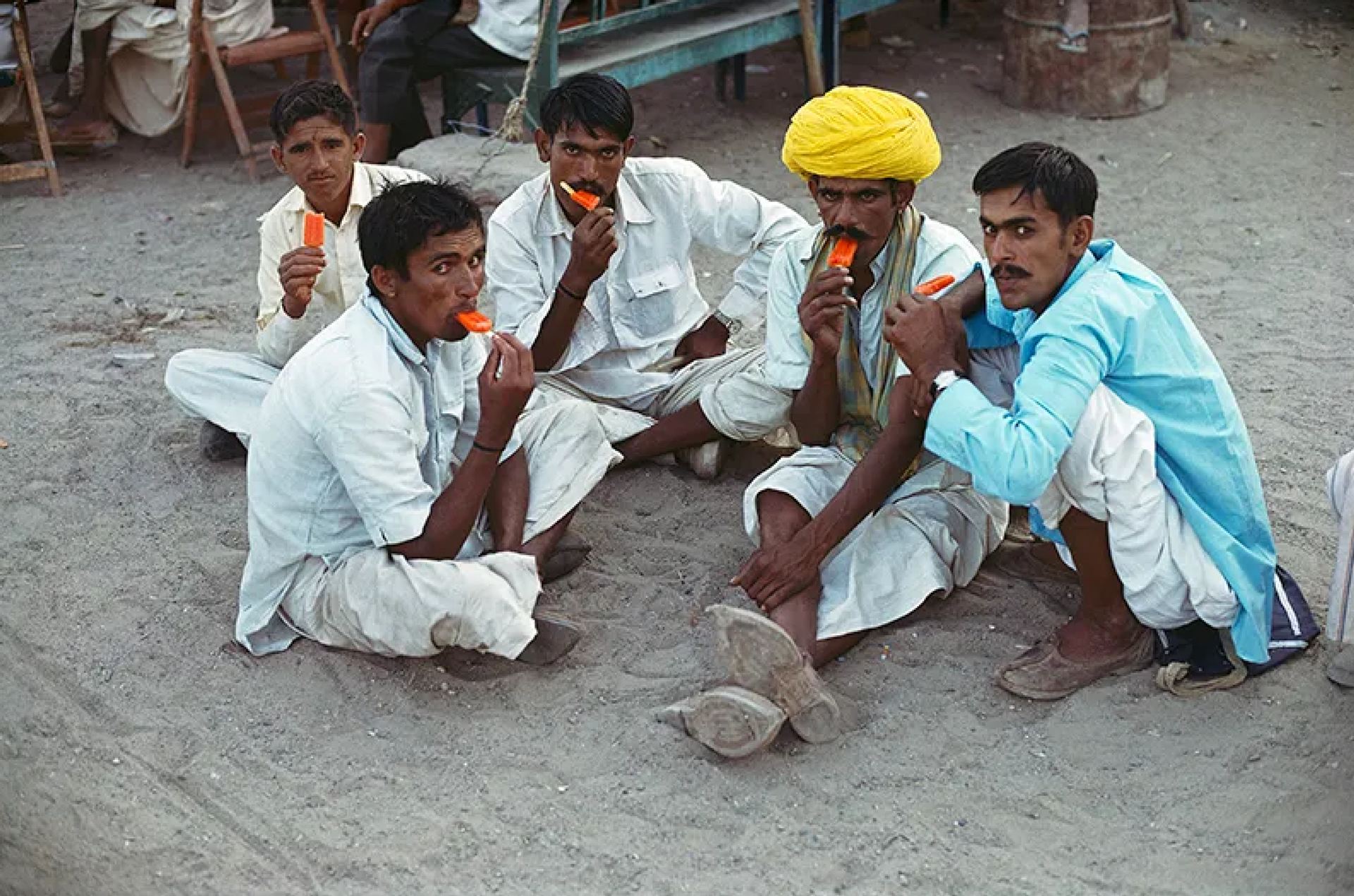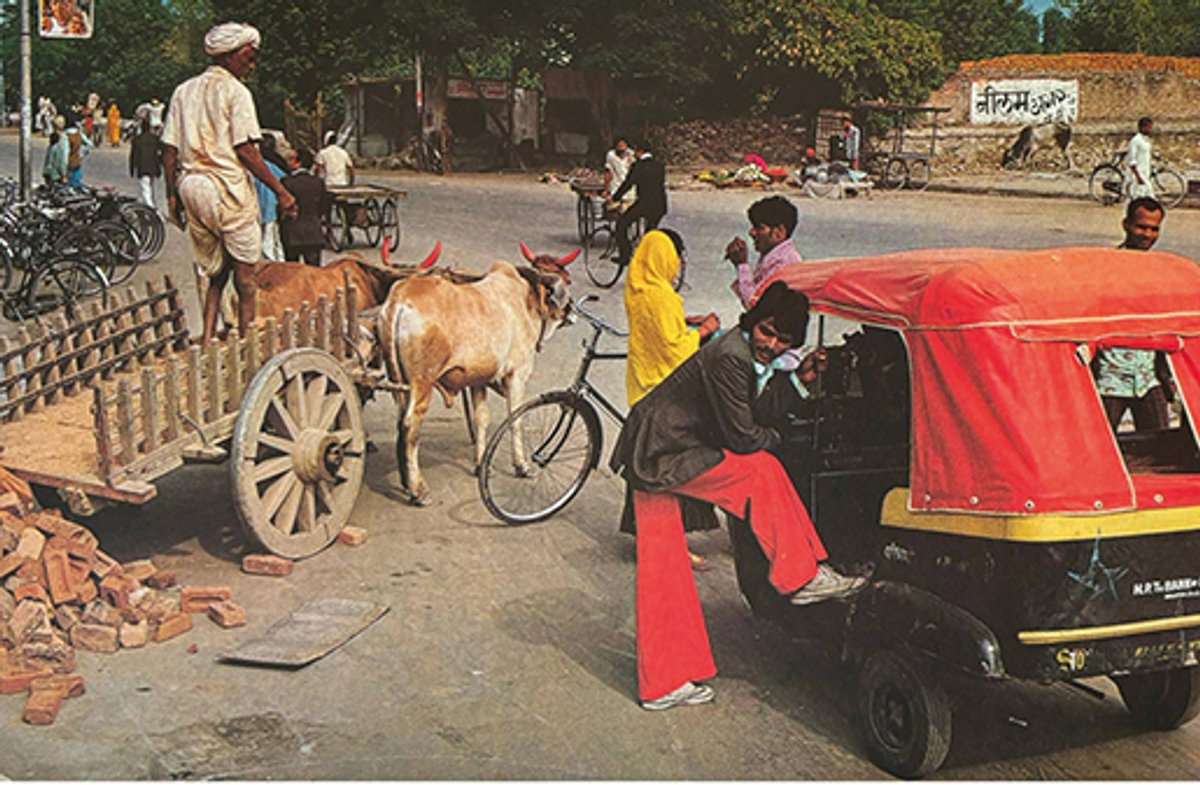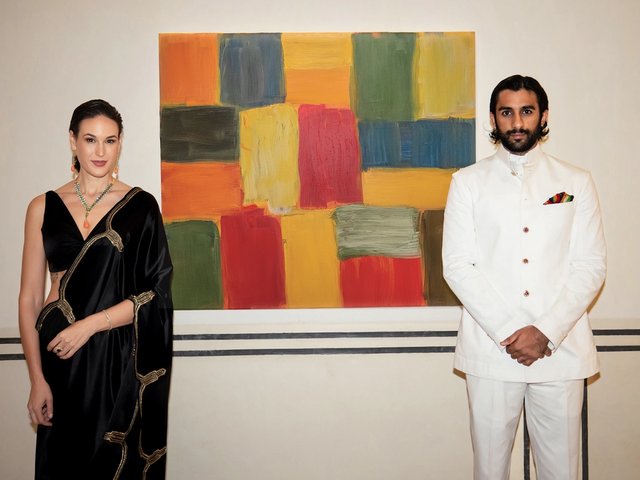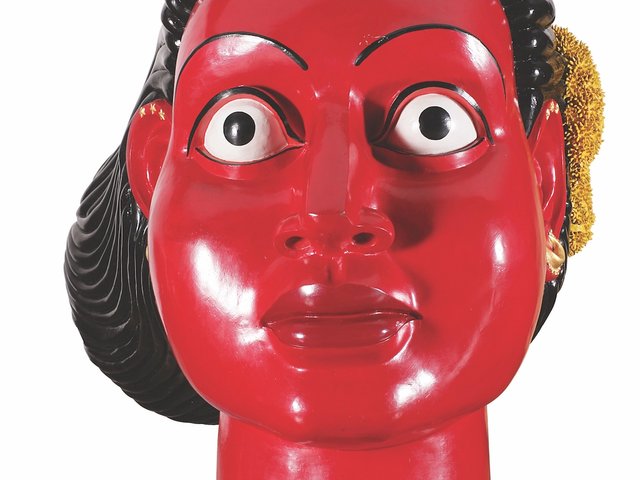Raghubir Singh, one of India’s most famous 20th-century photographers, shot extensively in his home state of Rajasthan, yet, until recently, had never exhibited there. Raghubir Singh: Rajasthan (1974-98) (until 28 February) brings together Singh’s Rajasthan works—dynamic pictures of locals that convey the riotous nature and innate stylishness of Indian life—at Mehrangarh Fort, a 16th-century palace-turned-museum dramatically perched on a hilltop overlooking the historic city of Jodhpur.
Opened with a speech by Gaj Singh II, the head of the former royal family of Jodhpur, the exhibition comprises around 15 lyrically composed photographs which capture an India in flux: a nation steadfastly holding onto its ancient traditions while hurtling towards a new, uncharted age of modernity. My favourite work from the show, shot in 1978, shows five rural villagers visiting Jodhpur, wearing traditional white outfits and sitting on the ground sucking coral-red ice lollies. They stare directly into the camera in a manner so unselfconscious that it feels provocative. The work confronts the old with the new, the masculine with the playful; the effect is quite thrilling.

Raghubir Singh, Villagers visiting Jodhpur enjoy ice sweets (1978) © The Estate of Raghubir Singh; Jhaveri Contemporary
The show occupies a small section of the ornate palace complex, which houses galleries featuring royal artefacts and Indian miniatures. It is these historic treasures, rather than contemporary art, that Jodhpur is known for. But this might one day change thanks to the efforts of JDH, an urban development project in Jodhpur, which is restoring heritage buildings and structures in its historic walled city. It has co-sponsored the Raghubir Singh exhibition, as well as a concurrent show of photographs by the Austrian artist Renate Graf, staged in a property redeveloped by the company.
“Jodhpur needs more things to do if it wants to become a proper tourist destination,” says the Indian dealer Amrita Jhaveri, “and contemporary art boosts its offerings.” Her Mumbai gallery, Jhaveri Contemporary, has represented Singh’s estate for the past decade and worked with the Mehrangarh Museum Trust, a non-profit that runs the fort, to organise the solo exhibition.
Contemporary art has the potential to help revitalise India’s crumbling palaces, too, and Rajasthan, whose name means “land of kings”, is a state full of them. In fact, the night before Singh’s opening I attended another exhibition launch in nearby Jaipur, at the Jaipur Centre for Art in the City Palace, which is the first dedicated contemporary art space in an active Indian royal residence.
Beyond their splendid settings, the Jodhpur and Jaipur shows have another thing in common: they are both staged by commercial galleries—in the latter case, two Indian galleries, Nature Morte and Espace, plus the international gallery Lisson. The galleries can sell works from the shows.
For a gallery like Jhaveri Contemporary, staging a show in Jodhpur presents an opportunity to engage with an audience outside of the typical art crowds that frequent Mumbai and Delhi's galleries and art fairs. As many of India's leading galleries, from Nature Morte to Mirchandani + Steinruecke, open up second locations in these established cities, doing something further afield and more unusual is an opportunity to tap into a new pool of collectors and address a different type of public.
Of course, a selling show in a palace might make some bristle. But this appears to be the logical conclusion of an art ecosystem that has been built up by the commercial galleries. “Everything good in Indian art comes from the private sector,” Peter Nagy, the founder of Nature Morte and the curator of the Jaipur show, told me at the opening. Certainly, these shows make evident where the power in Indian art lies, and who its new kings and queens may be.
• Raghubir Singh: Rajasthan (1974-98), Fort Gallery, Mehrangarh, Jodhpur, until 28 February




